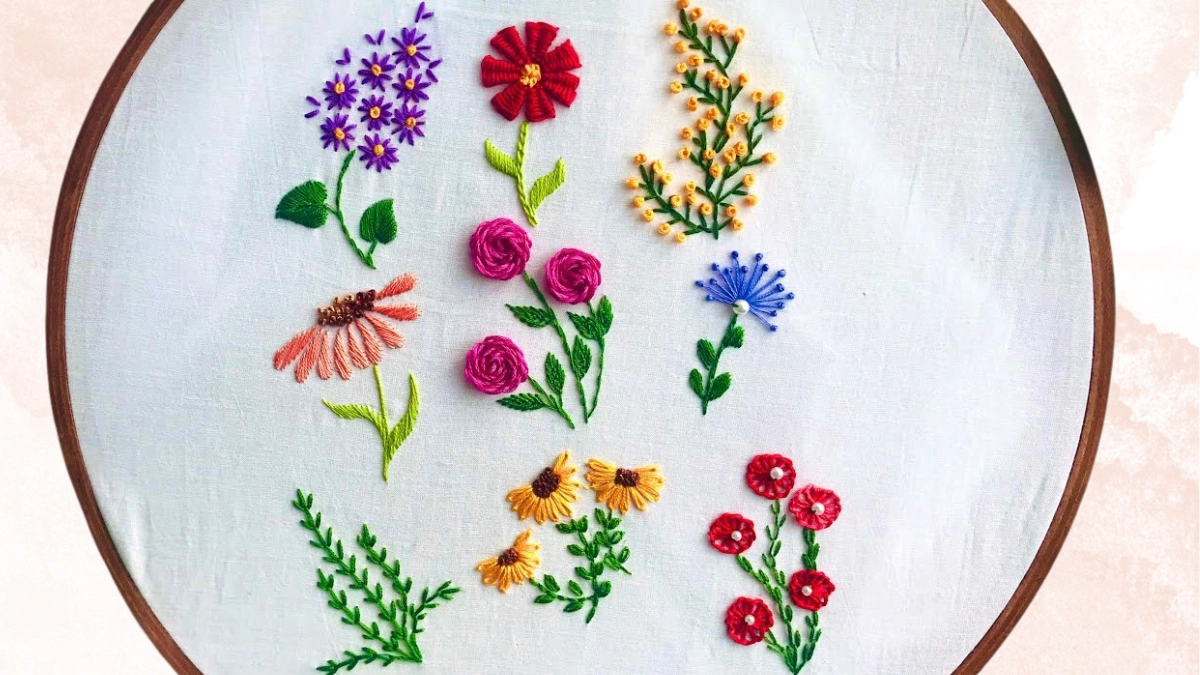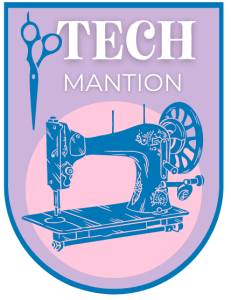Are you looking to add a touch of elegance to your crochet projects?
Embroidery can transform a simple crochet piece into an enchanting work of art, and there’s nothing quite like the charm of hand-stitched flowers. If you’ve ever admired intricate floral designs and wondered how to create such beauty yourself, you’re in the right place.
This article will guide you through the delightful process in how to embroider flowers on crochet. Whether you’re a novice looking to enhance your skills or an experienced crafter seeking new techniques, we’ll provide you with easy-to-follow steps and helpful tips to ensure your floral creations bloom beautifully on any crochet canvas.
Table of Contents
- 1 Understanding the Basics of Embroidery on Crochet
- 2 Preparation for Embroidery
- 3 Embroidering Flowers on Crochet
- 4 Advanced Embroidery Techniques
- 5 Finishing and Caring for Embroidered Work
- 6 Troubleshooting Common Embroidery Issues
- 7 Step by Step Guide on How to Embroider Flowers on Crochet
- 8 Inspirational Ideas for Embroidered Flowers
- 9 FAQs on How to Embroider Flowers on Crochet
- 10 Final Thoughts
Understanding the Basics of Embroidery on Crochet
Embroidering on crochet allows crafters to add vibrant, intricate designs to their crochet work, elevating it from simple patterns to detailed artwork.
Knitting and Crochet
Knitting and crocheting are both popular crafts for creating textiles, but they differ in techniques, tools, and fabric structure. Knitting uses a pair of long needles to create consecutive rows of loops, called stitches, which are then passed from one needle to the other. The resulting fabric is typically elastic and can be quite fine, with a variety of possible stitch patterns.
Crochet, on the other hand, involves a single hook to pull loops of yarn through other loops, creating a fabric that is thicker and less stretchy than knitted fabric. Crochet is often quicker than knitting and can be easier to correct if you make a mistake, as you only need to manage one live stitch at a time. Crochet is also known for its versatility in creating complex shapes and patterns, such as granny squares, which are harder to achieve with knitting.
Materials Required for Embroidering on Crochet
For embellishing crochet with embroidery, you need:
- Crochet piece
- Embroidery floss or yarn
- Stabilizer (optional)
- Embroidery hoop
- Scissors
Having the correct materials ensures a smooth embroidery process and a high-quality finished product.
Types of Crochet Fabrics Suitable for Embroidery

Embroidery complements crochet fabrics with a tighter weave. Single crochet or Tunisian crochet pieces usually provide a sturdy and dense fabric that can support detailed embroidered patterns.
Single Crochet: Single crochet is one of the most basic and commonly used stitches in crochet, creating a dense and sturdy fabric with a simple technique of inserting the hook, yarn over, pulling through, and then yarn over again to pull through both loops on the hook.
Tunisian Crochet: Tunisian crochet, also known as Afghan crochet, combines elements of knitting and crochet to create a distinct fabric that is typically worked on a longer hook and involves picking up and holding multiple loops on the hook before working them off, resulting in a textured, woven-like fabric.
Selection of Embroidery Threads
Choose embroidery threads based on their texture and color. Options include:
- Cotton embroidery floss
- Wool yarn
- Silk threads
Select threads that contrast nicely with the crochet item to make the design stand out.
Embroidery Needles for Crochet
Utilize a blunt tapestry needle for embroidering on crochet. The bluntness avoids splitting yarn fibers, while the needle’s eye is large enough to accommodate thicker embroidery threads.
Embroidery Stitches for Crochet
Common embroidery crochet stitches for enhancing crochet items are as follows. These stitches offer different textures and dimensions, suitable for various designs and effects.
Chain Stitch: The chain stitch is a sewing and embroidery technique in which a series of looped stitches form a chain-like pattern, commonly used as a decorative element in embroidery or as the foundation row in crochet.
French Knot: A French knot is a small, knotted stitch used in embroidery that creates a raised dot or ball on the fabric, often used to add texture or detail to a design, such as the center of a flower or to dot an ‘i’.
Satin Stitch: Satin stitch is an embroidery technique used to fill areas with long, smooth stitches that lie flat and are closely laid together, creating a shiny, satin-like surface that’s ideal for covering larger areas with a solid color.
Backstitch: Backstitch is a strong, straight stitch used in both sewing and embroidery that involves stitching backward to the direction of sewing, making it ideal for outlines or details in embroidery, as well as for seams in hand sewing that require strength.
Preparation for Embroidery

Before beginning to embroider flowers on crochet, the embroiderer should have a clear plan of action and ensure their materials are properly prepared. This includes creating a detailed sketch, transferring that design, and setting up the fabric and tools for efficient stitching.
Creating a Sketch or Pattern
The embroiderer designs a sketch or pattern for the flowers they intend to create. This can involve drawing the design by hand or using a software program to generate a detailed embroidery pattern. Accurate dimensions and a clear depiction of the flower’s petals and leaves are essential for a successful outcome.
Transferring the Design onto Crochet Fabric
Once the design is ready, it’s transferred onto the crochet fabric. There are various methods for this, such as using transfer paper, water-soluble pens, or tracing the pattern directly—if the crochet fabric allows visibility. The choice depends on the intricacy of the design and the color of the yarn.
Read our full article on different ways to transfer design to fabric
Securing the Fabric in an Embroidery Hoop
The next step is to secure the crochet fabric in an embroidery hoop. This stabilizes the fabric, providing tension that helps in achieving uniform stitches. The hoop should be slightly larger than the design area to ensure easy maneuverability while stitching.
Knotting and Threading the Needle Properly
The embroiderer must choose the right needle size and thread type––usually, a sharp embroidery needle and floss are suitable. Knotting and threading the needle properly is crucial.
A simple knot can be used to prevent the thread from slipping through the fabric, and threading is done according to the desired thickness of the lines.
Embroidering Flowers on Crochet

Embroidering flowers onto crochet pieces can transform simple crafts into intricate artworks. It requires a careful selection of stitches and an understanding of yarn tension to ensure beautiful, consistent results.
Starting with Simple Flower Patterns
Beginning embroiderers should start with simple flower patterns, like the daisy or small petals, to build their skills before progressing to more complex designs. Clear charts and diagrams can guide their initial attempts to ensure that the basic structure of the flowers is accurate before adding complexity.
Techniques for Different Flower Types
There is a variety of stitches suitable for different flower types such as the French knot for small buds or lazy daisy for petals. For instance, to create texture and depth in roses, one might use a combination of the satin stitch and the stitch.
Adding Details and Shading to Flowers
The key to adding life to embroidered flowers is the addition of details and shading. This can be achieved by incorporating various shades of the same color or by using contrasting hues for highlights. Simple straight or back stitches can be employed to create fine details such as veins on leaves or the intricate central part of a sunflower.
Ensuring Even Stitch Tension
Maintaining even stitch tension is crucial for the embroidered piece to have a neat appearance. Crochets have a natural stretch, so one should practice consistent stitching, neither too tight nor too loose, to prevent puckering or distortion of the fabric.
Advanced Embroidery Techniques
Advanced embroidery techniques can greatly enhance the aesthetic of crocheted flowers, giving them more depth and intricacy. Embracing these methods requires patience and a steady hand, but the results are well worth the effort.

Incorporating 3D Elements into Flower Designs
Adding three-dimensional elements to flower embroidery can bring life and realism to crocheted pieces. Crafters often use loop stitches or piled knots to create a raised effect. Techniques like the Turkish Oya or three-dimensional stitches enable an embroiderer to add relief to their designs, giving the illusion of petals standing out from the fabric.
Utilizing Specialty Stitches
Specialty stitches, such as bullion or cast-on stitches, offer unique textures and detail for flower petals and centers. Each stitch involves multiple wraps of the thread around the needle or incorporates additional loops and twists to create complex patterns. For example, the bullion knot creates a tightly spiraled line that can skillfully mimic the densely packed center of a rose.
Mixing Embroidery with Beads and Sequins
Integrating beads and sequins into embroidery can give flowers a sparkling, eye-catching finish. They are sewn into the center or along the edges of petals to add a glint reminiscent of dewdrops. This technique not only beautifies but also adds weight and texture to the piece. When using this approach, embroiderers meticulously stitch each bead or sequin into place, often using smaller stitches to secure them firmly onto the crocheted fabric.
Finishing and Caring for Embroidered Work
Once the embroidery on crochet is complete, proper finishing techniques ensure durability and visual appeal, while careful maintenance preserves the beauty and integrity of the work.
Properly Finishing Embroidery Threads
To prevent unraveling and maintain the neatness of embroidered crochet, one must secure the threads correctly. It is essential to weave the ends of the embroidery floss into the backside of the crochet fabric using a tapestry needle. Keep the woven ends as invisible as possible to maintain the front’s appearance.
Washing and Blocking Embroidered Crochet
Embroidered crochet items require gentle washing to keep the fibers and colors in good condition. Use cold water and a mild detergent, preferably by hand. Then, block the piece to shape: pin the item on a blocking board or foam mat, and allow it to air dry completely. This ensures the crochet fabric and embroidery retain their shape and size.
Preserving Embroidery on Crochet Items
Long-term care is crucial for embroidered crochet works. Store them in a cool, dry place away from direct sunlight, which can cause colors to fade. If folding the item, place acid-free tissue paper between folds to prevent creasing. For display, avoid areas with high humidity or potential for stains.
Troubleshooting Common Embroidery Issues
When embroidering flowers on crochet projects, one may encounter several common pitfalls. By understanding how to resolve uneven stitch lengths, fixing thread knotting and tangling, and repairing mistakes in embroidery on crochet, the embroiderer can improve their craft and achieve more polished results.
Resolving Uneven Stitch Lengths
Uneven stitch lengths can detract from the aesthetics of embroidered flowers. To achieve uniform stitches, they should ensure consistent tension is maintained throughout the work. A tension hoop is beneficial; this keeps the crochet fabric taut and facilitates even stitching. Additionally, practicing on scrap fabric before beginning can help one develop a rhythm and promote stitch length consistency.
Fixing Thread Knotting and Tangling
Thread knotting and tangling often cause frustration. To prevent this, one can use a thread conditioner or wax which helps the thread glide smoothly. Cutting the thread at a proper length, usually no longer than 18 inches, can also reduce tangling. If a knot does occur, a needle can be used to gently tease it apart instead of pulling it tighter.
Repairing Mistakes in Embroidery on Crochet
Mistakes can happen to anyone, but they can be repaired. If the error is spotted early, one can carefully remove the stitches using a pair of embroidery scissors. To avoid visible holes after stitch removal, gently massaging the crochet fabric can help redistribute the yarn and close gaps. If a mistake is noticed after further progress, incorporating it into the design or covering it with additional stitching are possible alternatives.
Step by Step Guide on How to Embroider Flowers on Crochet
Inspirational Ideas for Embroidered Flowers
Embroidery can elevate the texture and aesthetic of crochet projects with vibrant colors and intricate details. This section offers detailed ideas for incorporating floral designs into crochet work.
Seasonal Flower Motifs
Seasonal motifs add a timely charm to any crochet piece. For spring, incorporate delicate blossoms like cherry blossoms or daffodils. In summer, stitch vibrant sunflowers or daisies.
Autumn calls for richly colored leaves and chrysanthemums while winter designs may include poinsettias or holly with berries. Each season brings unique flora that can inspire an array of embroidered motifs.
Combining Different Flower Species
Embroidering various flower species together can create a stunning bouquet effect. One can mix satin stitched tulips with some intricate French knot roses to add dimension. Adding smaller blooms like lazy daisy buds between larger flowers can fill spaces and add complexity to the overall design.
Design Ideas for Gifts and Decor
Crochet items with embroidered flowers make thoughtful gifts and charming home decor. Personalize a crochet throw with someone’s favorite flower or create plush pillows adorned with lavender sprigs for a calming presence. Table runners with embroidered floral borders can accentuate home styling, and crochet coasters with small embroidered blooms can add a delicate touch to any setting.
Explore how to embroider flowers on different clothing from here.
FAQs on How to Embroider Flowers on Crochet
How do you secure embroidery in crochet?
To secure embroidery in crochet, weave in the ends of your thread on the backside of the crochet piece using a tapestry needle, ensuring the stitches are tight and the thread is knotted discreetly to prevent unraveling.
How do you embroider details in crochet?
Embroider details in crochet by using a sharp embroidery needle and yarn or embroidery floss, making stitches over the crochet fabric, and following the pattern of the stitches to create intricate designs or simple embellishments.
Can you embroider on a crocheted blanket?
Yes, you can embroider on a crocheted blanket to add personalized touches or decorative motifs by using a yarn needle and choosing yarn that complements the weight and texture of the blanket’s yarn.
Can you sew over crochet?
You can sew over crochet to attach appliques, join pieces, or add fabric lining, ensuring you use a needle that can navigate through the yarn without splitting it and a thread that matches the crochet work.
Can you embroider on double crochet?
Embroidering on double crochet is possible and allows for a variety of patterns and details, as the taller stitches and spaces provide a good foundation for adding embroidery.
How do you embroider on crochet amigurumi?
To embroider on crochet amigurumi, use a fine needle and embroidery floss to add facial features or other small details, working carefully between the stitches to maintain the amigurumi’s shape and texture.
How do you add designs to crochet?
Add designs to crochet by using surface crochet techniques to apply additional yarn on top of completed work, or by embroidering directly onto the fabric, incorporating various stitches to create the desired pattern or image.
Final Thoughts
In conclusion, learning how to embroider flowers on crochet can significantly enhance the beauty and uniqueness of your handcrafted items. With the right tools and a bit of practice, you can turn simple crochet pieces into vibrant, textured works of art.
Whether you’re adorning a cozy blanket or personalizing a gift, embroidery offers endless creative possibilities. So grab your needle and thread, and let your crochet bloom with the addition of delicate, embroidered flowers.








